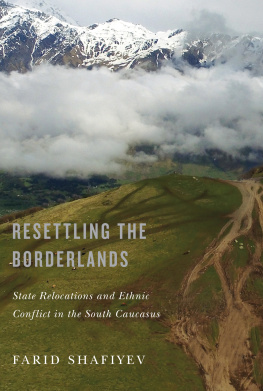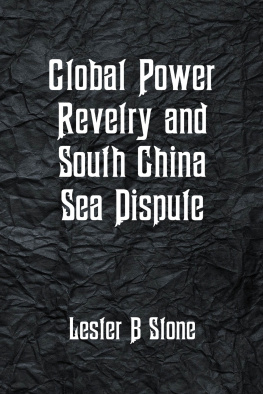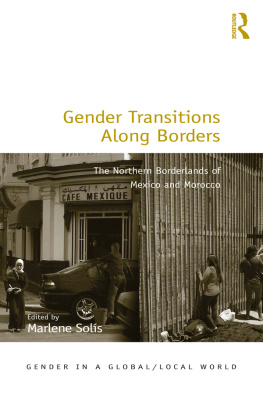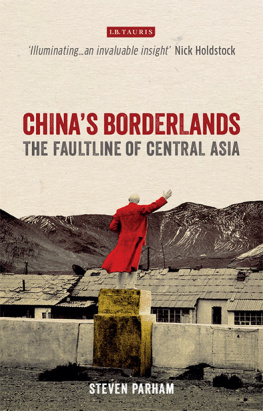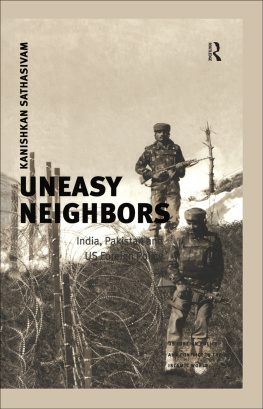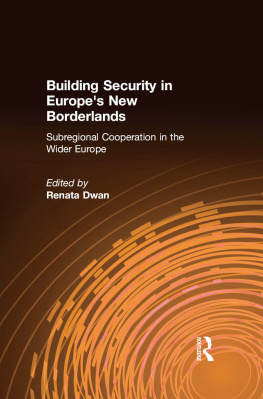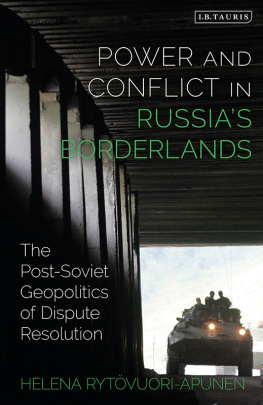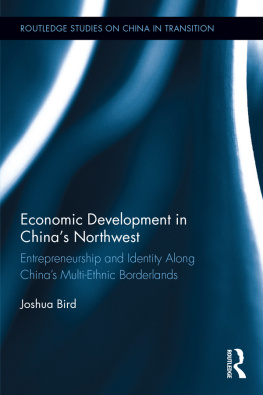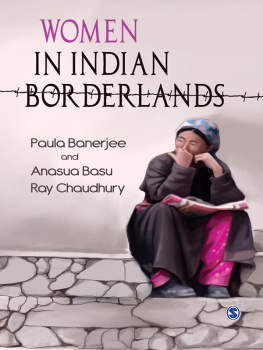
Conflict in India and Chinas Contested Borderlands
For a long time, India and China have been seen as the rising economic giants on the Asiatic mainland and much comparative work in this regard has been done. Studies of the conflicts, which have plagued the borderlands of India and China, however, have tended to only analyse individual case studies without attempting to compare and contrast the situation in these conflicts.
This book compares and contrasts the situation in Indias disputed borderlands Kashmir and the Indian northeastern states with Chinas contested borderlands Xinjiang and Tibet. The book looks at the root causes of these conflicts and how they have evolved and changed their character with the passage of time. Analysing how the countries have dealt with their territorial disputes from the 1950s until more recent times, the author shows to what extent these state policies have exacerbated the already strained situation. Using data collected primarily through interviews, from the people/inhabitants of these conflict zones, the book throws new light on the problem. This bottom-up approach allows the people to speak and provides a different understanding of the nature of the conflict, which may very well be the way forward for long-lasting peace.
A comparative study of the conflicts in the contested borderlands of China and India, the book will be of interest to scholars studying Asian security studies and Asian Politics particularly, and Defence and Security Studies more generally.
Kunal Mukherjee is a lecturer in International Relations/Asian Politics at the Department of Politics, Philosophy and Religion Lancaster University, UK.
Routledge Contemporary Asia Series
60 Energy Transition in East Asia
A Social Science Perspective
Edited by Kuei-Tien Chou
61 Faces of Homelessness in the Asia Pacific
Edited by Carole Zufferey and Nilan Yu
62 Political Participation in Asia
Defining and Deploying Political Space
Edited by Eva Hansson and Meredith L. Weiss
63 Religious and Ethnic Revival in a Chinese Minority
The Bai People of Southwest China
Liang Yongjia
64 Protecting the Weak in East Asia
Framing, Mobilisation and Institutionalism
Edited by Iwo Amelung, Moritz Blz, Heike Holbig, Matthias Schumann and Cornelia Storz
65 Middle Class, Civil Society and Democracy in Asia
Edited by Hsin-Huang Michael Hsiao
66 Conflict in India and Chinas Contested Borderlands
A Comparative Study
Kunal Mukherjee
For more information about this series, please visit: https://www.routledge.com/Routledge-Contemporary-Asia-Series/book-series/SE0794
Conflict in India and Chinas Contested Borderlands
A Comparative Study
Kunal Mukherjee
First published 2019
by Routledge
2 Park Square, Milton Park, Abingdon, Oxon OX14 4RN
and by Routledge
52 Vanderbilt Avenue, New York, NY 10017
Routledge is an imprint of the Taylor & Francis Group, an informa business
2019 Kunal Mukherjee
The right of Kunal Mukherjee to be identified as author of this work has been asserted by him in accordance with sections 77 and 78 of the Copyright, Designs and Patents Act 1988.
All rights reserved. No part of this book may be reprinted or reproduced or utilised in any form or by any electronic, mechanical, or other means, now known or hereafter invented, including photocopying and recording, or in any information storage or retrieval system, without permission in writing from the publishers.
Trademark notice: Product or corporate names may be trademarks or registered trademarks, and are used only for identification and explanation without intent to infringe.
British Library Cataloguing-in-Publication Data
A catalogue record for this book is available from the British Library
Library of Congress Cataloging-in-Publication Data
Names: Mukherjee, Kunal, author.
Title: Conflict in India and Chinas contested borderlands: a comparative study / Kunal Mukherjee.
Description: 1 Edition. | New York: Routledge, 2019. |
Series: Routledge contemporary asia series; 66 | Includes bibliographical references and index. |
Identifiers: LCCN 2018047523 (print) | LCCN 2018049738 (ebook) | ISBN 9780429398940 (Ebook) | ISBN 9780429677632 (Adobe Reader) | ISBN 9780429677625 (ePub) | ISBN 9780429677618 (Mobipocket Encrypted) | ISBN 9780367025731 (hardback)
Subjects: LCSH: Conflict managementIndia. | Conflict managementChina. | BorderlandsIndia. | BorderlandsChina.
Classification: LCC HM1126 (ebook) | LCC HM1126 .M85 2019 (print) | DDC 303.6/9dc23
LC record available at https://lccn.loc.gov/2018047523
ISBN: 978-0-367-02573-1 (hbk)
ISBN: 978-0-429-39894-0 (ebk)
Typeset in Times New Roman
by codeMantra
This Book is for My Loving and Very Supportive Grandmother, Nivarani Ganguly
Contents
A large debt of my gratitude is owed to my department, PPR [Politics, Philosophy and Religion] at Lancaster University, UK for supporting my research field trips to Asia. Without the funding from Lancaster, this project would not have been possible. I have remarkable colleagues, friends and peers in the UK who have been supportive throughout this journey. On numerous occasions I have had very stimulating discussions with them about this topic which has helped me to write this book. I would also like to thank some of them for their moral support. I am grateful to the reviewers (especially the first reviewer/Reviewer A) for their comments and helpful feedback, which has gone a long way in enriching and strengthening this piece. Id like to thank my family for always being there for me. And finally, Id like to thank the Routledge team for their abundant guidance and encouragement, for which I am truly grateful. I would especially like to thank Dorothea Schaefter from Routledge (Asian Studies) for her continued support throughout the process of writing this book.
Thank you all!
India and China for a long time have been seen as the rising economic giants on the Asiatic mainland. After the East Asia Miracle (or miracle of the Asian Tigers: Taiwan, Hong-Kong, Singapore and South Korea) which took place in the mid-1990s, academic research interests in the west have shifted to the Asiatic mainland, focussing primarily on these two countries. Both countries have been experiencing impressive economic growth rates since they liberalised their economies. China liberalised its economy and embraced global market forces in the late 1970s under Deng Xiaoping, and India exposed its domestic markets to international competition in the early 1990s, under Prime Minister Narasimha Rao. However, before market liberalisation took place in both countries, the economic growth rates were sluggish, and both economies were by and large protectionist. Now, of course, both countries are seen as exciting economic destinations for international investors. Both countries are also members of prestigious international economic groups and forums, such as the BRICS [Brazil, Russia, India, China and South Africa] and EAGLE [Emerging and Growth Leading Economies]. Most analysts have identified these two countries as the new areas for potential growth in the future, and the academic interest and research on the economies of these two countries continues.


